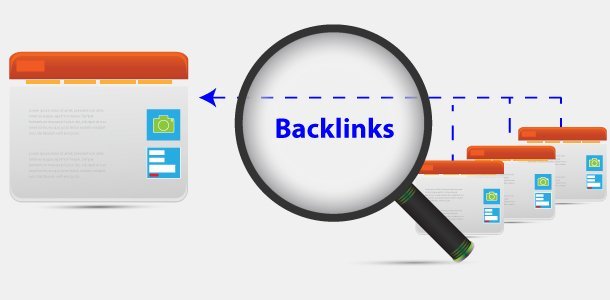Hi there! Wondering if all that keyword research, backlink building, and on-page optimization is actually moving the needle? You’re not alone! The truth is, SEO can feel like a black box, but there’s one crucial key that can unlock the mystery: keyword rank tracking.
The Shocking Truth About SEO: You’re Probably Flying Blind (and How to Stop!)
Let’s face it: SEO is not a “set it and forget it” strategy. It’s a dynamic, ever-evolving landscape, and if you’re not carefully monitoring your progress, you’re essentially wandering in the dark. You need to see if your website is showing up in Google search results for the keywords you’re targeting. That’s where rank tracking comes in – think of it as your SEO GPS. Without it, you have no clear idea if you are on the right road!
Why Rank Tracking is Your Secret Weapon (That No One Talks About!)
Forget guessing games and endless speculation. Rank tracking is the real deal. It’s the most reliable way to determine if your SEO strategy is actually working. Here’s why you absolutely need to be tracking your keyword rankings:
- The Ultimate Proof of Concept: Rank tracking shows you if your website is appearing in Google search results for the keywords you’re trying to rank for. If your site isn’t showing up for keywords you’re targeting, you know it’s time to make some adjustments.
- Real, Tangible Results: Unlike other SEO metrics that can be a bit nebulous, rank tracking provides concrete data on where your website stands in search engine results for specific keywords.
- Spot the Trends: Rank tracking helps you identify trends – are your rankings going up or down? Knowing how your rankings change over time gives you crucial insights into what’s working (and what’s not) in your SEO strategy.
- Competitive Advantage: See where your website ranks in comparison to your competitors. This information is invaluable for strategic planning and identifying opportunities.

Introducing the Game Changer: KatLinks – Your All-in-One SEO Command Center
Okay, you’re convinced. You know that rank tracking is essential. But where do you even start? You could try to manually track your rankings by doing Google searches yourself, but who has time for that?
That’s where the right tool makes all the difference. And that’s why we’re so excited to introduce you to KatLinks, an SEO tool designed to make your life easier. (Full disclosure: the creator of the tool is also the presenter of this video.) KatLinks not only offers rank tracking, but also a host of other SEO features. It can be your command center for your website’s SEO, but for now we are focusing on its rank tracking capabilities.
KatLinks: Not Just Another Tool, It’s Your SEO Sidekick
Here’s why KatLinks stands out from the crowd:
- Simplicity is King: KatLinks is designed to be incredibly user-friendly. You don’t need to be a tech wizard to use it.
- Data at Your Fingertips: Get a clear and comprehensive view of your keyword rankings, search volume, and how your positions change over time.
- More Than Just Rank Tracking: KatLinks is an all-in-one tool that includes other features like organic keyword research and keyword research.
Ready to See How Easy Rank Tracking Can Be? Let’s Dive In!
Here’s how to get started with KatLinks rank tracking (it’s seriously easier than making coffee):
Step 1: The Setup (It’s Almost Too Easy!)
- Head Over to KatLinks: Go to katlinks.io.
- Enter Your Domain: Input your website’s root domain.
- Start Your Free Trial: Click “Start free trial”. You’ll get a 14-day free trial to see all the power of the tool.
- Email Entry: Enter your email address and you’re in. You’ll be directed to a dashboard.
Step 2: Exploring Your Dashboard (Prepare to Be Amazed)
- Dashboard Delight: You will land on a dashboard that will begin populating data. You’ll see a lot of data that the tool has started pulling automatically when you created your account.
- Navigate to Rank Tracking: In order to access your rank tracking, you have to navigate to the specific section in your dashboard.
Step 3: Understanding Rank Tracking Data (It’s All About the Details)
- Keywords: The Rank Tracking tool shows you which keywords you are tracking.
- Search Volume: See how many people are searching for the keywords you’re tracking.
- Rankings over time: Observe how your website’s ranking has changed over several tracking dates. The tool displays your rank for each of the keywords you are tracking over the course of the last four tracking dates. This can help you identify the keywords you’re excelling with, and areas you need to improve on.
Let’s look at an example: Imagine you’re tracking the keyword “affordable SEO tool.” You might see that four days ago, your website was at position 35, then it moved up to position 33, then 36, and back to 33. This tells you that while you are getting some traction, you have more work to do to move to the first page of results for the term.
Another Example: Consider the keyword “Backlink software.” Your website wasn’t ranking for it, but then two days ago, you started showing up at position 22, and today you’re at position 18. This is great news! It shows you that your SEO efforts for this keyword are working and that your website is moving up in the rankings.

Step 4: Adding Keywords to Track (The Fun Part!)
Now that you’ve seen the data, let’s add some keywords you want to track. You have multiple options:
- Manual Entry:
- Click the “Add Keyword” button.
- Enter one keyword per line.
- Click “Add Keywords”.
- For example, add keywords like “SEO audit tool” and “cheap SEO software”.
- Organic Keywords:
- Click on “Organic Keywords”.
- KatLinks will find keywords that your website is already ranking for, even if you weren’t tracking them.
- Select keywords that you want to track.
- Click “Send to tracking” next to the keywords you wish to monitor.
- Keyword Research:
- Click on “Keyword Research”.
- Enter a “seed” keyword to perform research on.
- Select the country and language for your research.
- Click “Start Research”.
- Review the results and add keywords to your tracking list by clicking the “Send keyword to Rank Tracking”.
The Magic of Tracking: Turning Data into Actionable Insights
Once you have set up keyword rank tracking, it is time to use that information to further optimize your website. Rank tracking data helps you: * Identify which SEO tactics are working and which aren’t. * Fine-tune your approach to move higher in the rankings. * Understand what is working for your competitors. * Maximize your ROI from your SEO investments.
Don’t Just Dream of SEO Success, Track It!
SEO is not a mysterious, impossible challenge. It’s a process that requires strategy, implementation, and, crucially, consistent tracking. By taking advantage of rank tracking tools like KatLinks, you can transform your SEO journey into a clear path towards success.

Conclusion
In a nutshell, if you’re serious about SEO, you need to be tracking your keyword rankings. It’s not an option, it’s a necessity. With tools like KatLinks, it’s easier than ever to see exactly how your website is performing in Google search results. Don’t let your hard work go unnoticed. Start tracking today and start seeing real results!
FAQs
Is rank tracking really that important? Absolutely! Rank tracking is the most direct way to see if your SEO efforts are paying off. It shows you exactly where your website appears in Google search results for the keywords you’re targeting. Without it, you’re essentially making decisions in the dark.
Can I use other rank tracking tools besides KatLinks? Yes, there are many other rank tracking tools available. However, KatLinks is an all-in-one SEO solution that not only offers rank tracking but also other features such as organic keyword research and keyword research. It offers a simple user experience that can be helpful for both beginners and experts.
How often should I be checking my keyword rankings? It’s a good idea to check your rankings at least weekly, if not more frequently. This will help you to identify trends and react to any changes in your rankings. If you notice any large drops, you can investigate further, and tweak your SEO strategy to get back on track.

